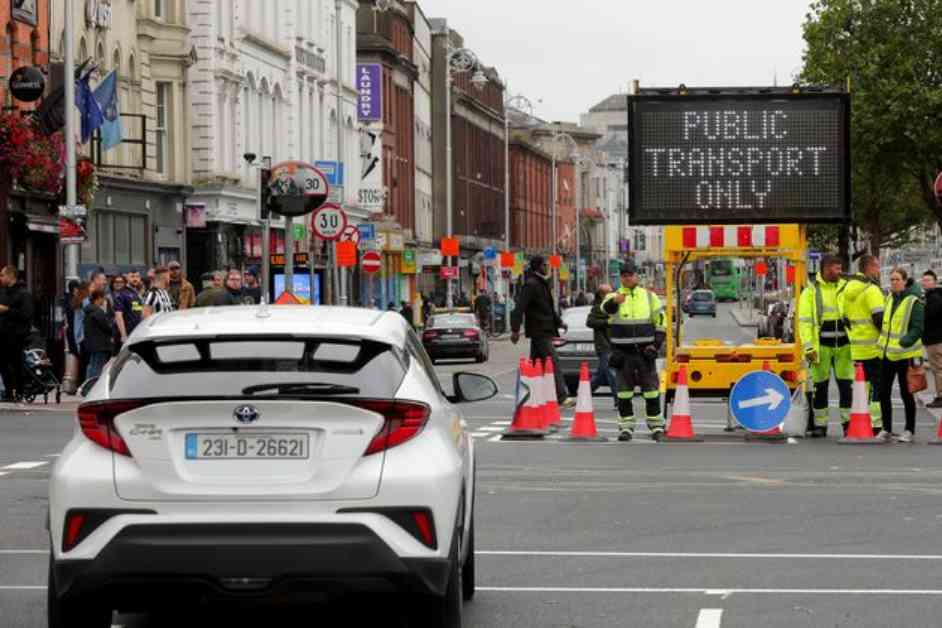Dublin Traffic Easing Rules: Comprehensive Guide and Updates
Major changes to the flow of traffic in Dublin city centre have come into effect as part of a vision to enhance the capital’s streets and reduce vehicle congestion. The Dublin City Centre Transport Plan (DCCTP) overseen by Dublin City Council (DCC) aims to prioritize public transport, walking, and cycling while reducing the number of cars traveling through the city. Here’s everything you need to know about the recent changes and updates.
### The Dublin City Centre Transport Plan
The DCCTP is a forward-looking plan designed to reshape the future of Dublin city centre by discouraging through traffic and promoting sustainable modes of transportation. The plan seeks to create a more pedestrian-friendly urban environment, enhance street footfall, and improve public transport services. By implementing these changes, the aim is to reduce congestion and make the city center more accessible and enjoyable for everyone.
### Major Traffic Changes in Dublin City Centre
The recent traffic management measures in Dublin city center focus on the north and south quays, specifically at Bachelors Walk, Burgh Quay, and Aston Quay. These changes involve updated road markings and signage to redirect traffic flow and restrict certain vehicle movements. General traffic is limited during peak hours from 7am to 7pm, with exceptions for buses, taxis, and cyclists.
On Bachelors Walk, general traffic can travel up to O’Connell Street but must turn left and cannot continue to Eden Quay. Only buses, taxis, and cyclists are permitted to proceed straight ahead. Similarly, on the south quays, general traffic can travel along Burgh Quay up to O’Connell Bridge but cannot continue straight to Aston Quay. Public transport, taxis, and cyclists are allowed to proceed straight ahead, with other vehicles having alternative routes.
These changes aim to prioritize sustainable modes of transport, reduce congestion, and create a more efficient and pedestrian-friendly city center. By reallocating road space to public transport, cyclists, and pedestrians, the plan seeks to enhance the overall urban experience and improve the quality of life for residents and visitors alike.
### Implementation and Cost Considerations
The Dublin City Centre Transport Plan was developed by DCC in collaboration with the National Transport Authority (NTA) as part of the city’s long-term development strategy. While the exact cost of implementing the plan has not been disclosed, the potential impact on businesses and retail establishments has sparked debate.
Supporters of the plan argue that reducing through traffic will benefit the city by reducing congestion, improving air quality, and creating a more vibrant and livable urban environment. However, critics express concerns about the economic implications of limiting vehicle access to the city center and its potential impact on local businesses.
### Stakeholder Perspectives and Controversies
Key stakeholders such as Transport Minister Eamon Ryan and various parties represented on DCC have voiced support for the transportation plan, emphasizing its long-term benefits for the city. Advocacy groups like the Dublin Commuter Coalition and the Dublin Cycling Campaign have also endorsed the plan’s objectives.
On the other hand, the Dublin City Centre Traders Alliance, which includes prominent retailers and business owners, has raised objections to the plan, citing potential negative effects on commercial activities and customer accessibility. Concerns have been raised by organizations like DublinTown and Retail Excellence Ireland regarding the economic impact of the changes on businesses in the city center.
### Monitoring and Future Plans
To evaluate the effectiveness of the traffic management measures, a working group chaired by Dublin Lord Mayor James Geoghegan will be established to oversee the implementation of the transport plan. This group will include representatives from business organizations, the NTA, elected officials, and other stakeholders to assess the impact of the changes and address any concerns.
Looking ahead, additional changes are planned for Dublin city center to further enhance pedestrian accessibility and create more inviting public spaces. Proposals include pedestrianizing streets like Capel Street, expanding pedestrian zones on Dawson Street and South William Street, and transforming areas like College Green and Dame Street into pedestrian plazas.
Further developments are expected on Westland Row and Pearse Street, with restrictions on left turns for general traffic and enhancements for public transport and cyclists. These initiatives aim to improve traffic flow, prioritize sustainable transport options, and create a more pedestrian-friendly urban landscape.
In conclusion, the Dublin City Centre Transport Plan represents a significant step towards creating a more sustainable, accessible, and vibrant city center. By prioritizing public transport, walking, and cycling, the plan seeks to reduce congestion, improve air quality, and enhance the overall urban experience for residents, visitors, and businesses alike. While challenges and controversies may arise, the long-term benefits of these changes are expected to contribute to a more livable and thriving city environment.












